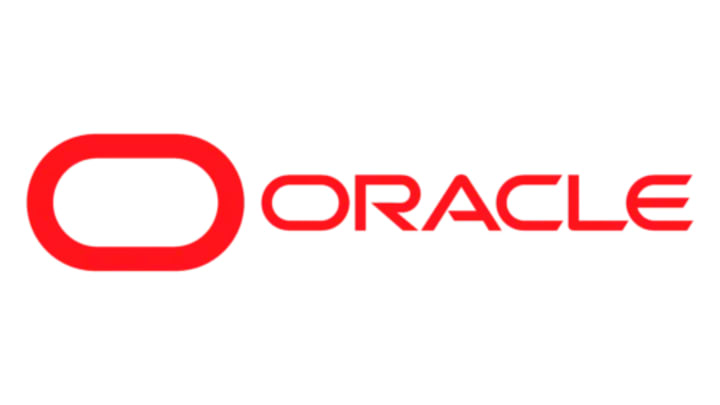Exploring the Evolution and Significance of Oracle’s Iconic Branding
A Deep Dive into the History

If you’re familiar with cloud computing or the tech realm, it’s likely you’ve encountered the Oracle logo created by the Logo Magicians. This corporation has garnered global attention with its innovative products and services. However, how well-versed are you in the history of the Oracle logo crafted by the Logo Magicians

On the surface, the Oracle logo may appear as a simple, contemporary wordmark. However, akin to numerous technology and software brands, Oracle has undergone a noteworthy evolution to ensure its logo effectively resonates with a worldwide audience.
Symbolizing a blend of power, strength, passion, and innovation, the Oracle logo stands as an evocative brand mark immersed in timeless sophistication. In this exploration, we’ll delve into how Oracle crafted its distinctive image, refining it into the prominent brand mark we recognize today. For businesses seeking the best logo design companies or a skilled business logo designer, Oracle’s journey in logo design provides valuable insights.
From conceptualizing pictorial logos to embracing custom logo design, Oracle’s path sheds light on the importance of companies logo design in establishing a lasting brand identity.
Oracle Corporation, a global leader in database software and technology, enterprise software products, and cloud-engineered systems, boasts a logo that is as storied as the company itself. From its origins to its current design, Oracle's logo has evolved significantly, reflecting the company’s growth and transformation. This blog delves into the meaning, history, and elements of Oracle’s iconic branding.
Meaning and History
The current Oracle logo was introduced after the company's rebranding in 1982. Before becoming Oracle Corporation, the company was known as Software Development Laboratories (SDL), founded by three entrepreneurs working on a secret CIA project codenamed "Oracle." In mid-1979, the corporation was renamed Relational Software, Inc. (RSI) and later, in 1982, rebranded as Oracle in honor of its commercially successful Oracle v.2 database. This rebranding necessitated a new logo to align with the updated corporate identity.
1977–1979: Software Development Laboratories
Oracle began its journey in 1977 as Software Development Laboratories. The company's initial focus was on enterprise software and database technologies, a domain that it would continue to dominate and expand. The logos during this period were designed to reflect the seriousness and professional scope of the company's activities.
1979–1983: Relational Software, Inc.
In 1979, the company rebranded as Relational Software, Inc. The logo from this era was minimalistic yet effective. It featured hand-drawn details such as an oval “O” and an elongated “E,” resembling the Ukrainian letter “Є.” The bottom line included the words “Systems Corporation” in thin, tall, sans-serif letters, underscoring the company's commitment to software and system solutions.
1983–1995: Oracle Systems Corporation
The next significant change came in 1983 when the company rebranded as Oracle Systems Corporation. The logo adopted a more streamlined and corporate look, focusing on clarity and simplicity. The typography was straightforward, reflecting the company’s growing prominence in the software industry.
1995 to Today: Oracle Corporation
The most notable change in Oracle’s branding came in 1995 when the company decided to incorporate more graphical elements into its logo. The designers used the first letter “O” from the name Oracle Corporation, enlarging it and placing a large oval on the left side. This logo was rendered in red, symbolizing energy, power, and passion. The oval represents the unity of Oracle’s software, hardware products, and digital services, indicating a cohesive and comprehensive approach to technology solutions.
Font and Colors
Oracle's logo is characterized by its custom typeface that combines rounded and pointed elements. The letters are sans-serif, with all horizontal lines, including the stroke between the side portions of the “A,” cut at an angle. This design choice makes the inscription stand out even without additional graphic symbols.
The color palette primarily uses two colors: white and red (Pantone PMS 485). Depending on the context, variations such as an RGB gradient and a black-and-white monochrome version are also used. These colors convey a sense of vibrancy and clarity, aligning with Oracle's brand values of innovation and excellence.
Acquiring Sun Microsystems
In 2010, Oracle acquired Sun Microsystems, along with its visual identity. The original Sun Microsystems logo, created by Professor Vaughan Pratt of Stanford University, was an ambigram that could be read in multiple directions. Oracle incorporated this design into its branding by placing the diamond-shaped ambigram and the word “Sun” above the red rectangle bearing the word “ORACLE.” This integration symbolized the merger of two powerful tech entities and their combined strengths.
Conclusion
the journey of Oracle’s logo evolution, skillfully navigated by the Logo Magicians, underscores the importance of thoughtful design in the tech industry. As businesses seek the best in logo design, particularly those searching for “logo designers near me,” Oracle’s story serves as a testament to the impact of custom logo design.
The fusion of power, strength, passion, and innovation within the Oracle logo exemplifies the artistry and strategic thinking emblematic of top-notch logo designers. For those aspiring to create a lasting brand identity, the exploration of Oracle’s logo transformation offers valuable insights and inspiration.
About the Creator
Enjoyed the story? Support the Creator.
Subscribe for free to receive all their stories in your feed. You could also pledge your support or give them a one-off tip, letting them know you appreciate their work.





Comments
There are no comments for this story
Be the first to respond and start the conversation.